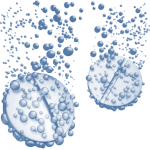Taste masking techniques: An updated review
Bhabani S Nayak, Dinesh K Sharma, P Ellaiah, Suraj Sahoo
Abstract:
Taste masking becomes a prerequisite for bitter drugs to improve the patient compliance especially in the pediatric and geriatric populations. Some orally administered drugs exhibit bitter taste. Two approaches are commonly utilized to overcome the bitter taste of the drug. The first includes reduction of drug solubility in the saliva and second approach is to alter the ability of the drug to interact with taste receptors. Various methods are available to mask the undesirable taste of the drugs. Conventional taste masking techniques such as the use of sweeteners, amino acids and flavoring agents alone are often inadequate in masking the taste of highly bitter drugs. The recent techniques of taste masking are dispersion coating, granulation, solid dispersions, inclusion complexation, ion exchange resin approach, mass extrusions technique, spray drying, microencapsulation, liposomes, prodrugs, salt formation, adsorption, wet spherical agglomerations, multiple emulsions, gel formation, effervescent technique and continuous multipurpose melt (CMT) technology. The field of taste masking of active pharmaceutical ingredients (API) has been continuously evolving with varied technologies and new excipients.
Keywords: Taste, Taste Buds, Taste Masking Techniques, Bitter Drug.



